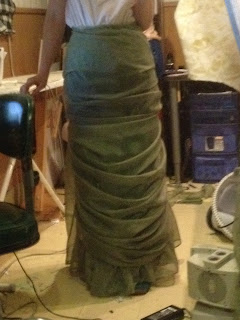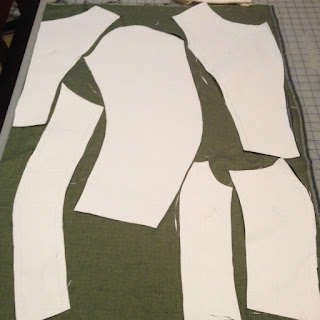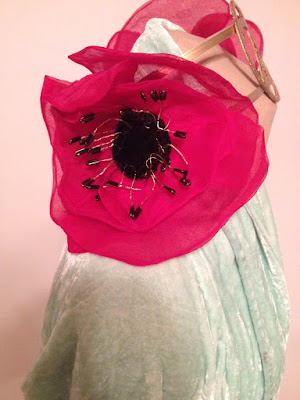The last week has been characterized by a despondency relating directly to the systematic (temporary) demise of all my sewing machines, and the return of a faithful loaner. However, I have been saved by a Christmas Miracle, in the form of an early present from my Lovey Dove, who researched, saved, consulted, and bought me the nicest civilian machine I have ever owned.
I truly believe this Janome DC2014 is going to be a paradigm-changer for my sewing life. With an incredibly diverse and jam-proof machine, featuring an even-feed foot, one-step buttonholes, overcast options, and feed-dog adjustment, I was given the gift of extra weeks in the year (losing many to sewing machine frustration) and a pathway to cleaner, more professional sewing.
 |
| Bodice, front on the left and back on the right. |
First stages of skirt
I did a lot of studying of the late natural form/late bustle transitional period from 1880-1883, and wibbled a lot on what I wanted this skirt to convey. I decided to settle on the small perky bum and slim skirt of 1881.
Speaking of perky bums, I thought this addition to Truly Victorian's petticoat pattern really helped. For 1882-1883, I might add ruffles in the front as well, for that all-around, pre-bustle roundness.
 |
In a reversal of the Early Natural Form silhouette (narrow hips, wide at the feet), the Late Natural Form is wider at the hips and narrower at the feet.
|
Finally starting to look like something! Before filling in with paniers, puffs, and ruches. And lots of elastic, so I can actually walk in a skirt that slim. I'm quite sure they used elastic in the late Victorian era, I have a Godey's pattern that specifically calls for it.
As far as sleeves go, I wanted to do tight elbow sleeves that were completely shirred, with small elbow flounces. However, to save on time, I decided to reduce the number of gathering lines to create ruched mameluke sleeves, which I did not think were particularly period for the year. Imagine my surprise when I found actual images of puffed or ruched mameluke-type sleeves in fashion plates of the time!
 |
| Faux elbow puff on right |
 |
Upper puffs on the left, lower puffs on the right.
|
 |
| Definitely mamelukes on the left |
And Voila! Ruched-bicep double-puff mamelukes just like I wanted!
Plus, the paperwhites are blooming. Happy Victorian Christmas!








































